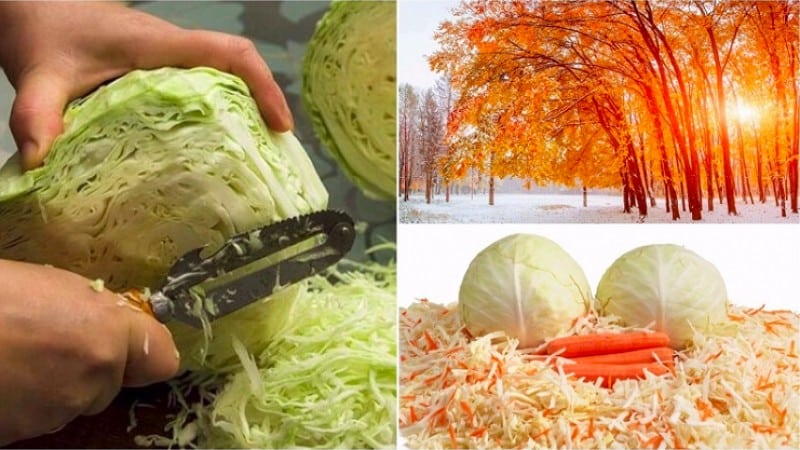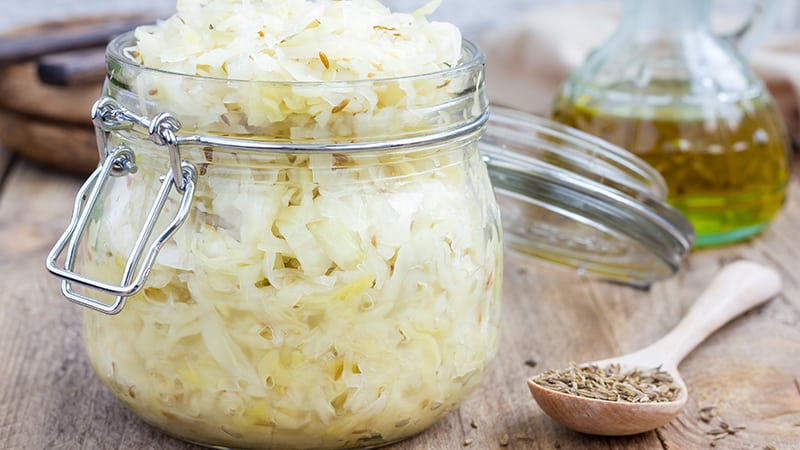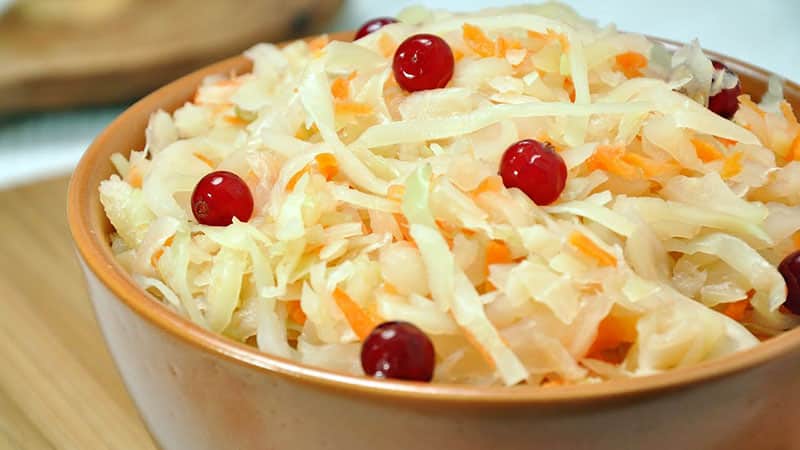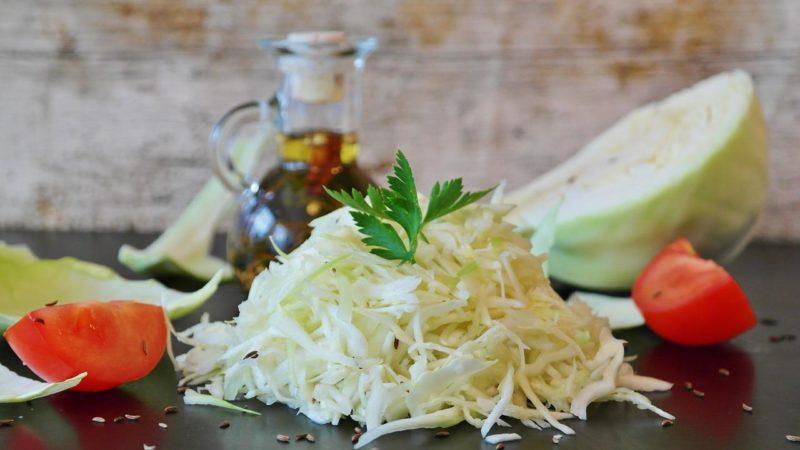The best time for preparations: when to salt cabbage in November and how to do it correctly
Sauerkraut is a traditional Russian dish, 100 g of which contains 40 mg of vitamins. This tasty and healthy snack is prepared in different ways. recipes, adding other vegetables and spices.
Experienced housewives, when choosing a time for salting, are guided by the lunar calendar and other criteria, which we will discuss in the article.
When to pickle cabbage in November
November is the optimal month for sauerkraut. By this time, late-ripening varieties are ripening, ideal for pickling. These heads of cabbage have dense and elastic leaves, filled with vitamins, sugars and nutrients.

Salting time
Even light first frosts will not damage the heads of cabbage: November forks are ready for long-term fresh storage and pickling. Suitable days in 2019 are from November 1 to 11 and after the 28th.
Reference. Sauerkraut is sauerkraut on “men’s” days – Monday, Tuesday and Thursday.
Favorable days for pickling for the winter according to the lunar calendar
Vegetables are salted on the waxing moon. It is believed that the new month promotes better salting, activates fermentation, and the cabbage turns out juicy and crispy. The first 5-6 days are chosen from the new moon.
According to the lunar calendar, the following dates are favorable in November 2019:
- from Friday, November 1, to Sunday, November 3 (Moon in Capricorn);
- Thursday, November 7 (Moon in Pisces);
- Monday, November 11 (Moon in Taurus);
- Thursday, November 28 (Moon in Sagittarius);
- Saturday, November 30 (Moon in Capricorn).
On the waning moon, cabbage is not salted, and the day of the full moon is not suitable. Observations confirm that the snack prepared during this period turns out to be soft or acidic, does not last long, and has an unpleasant aftertaste.
Reference. The full moon in 2019 falls on November 12, and the waning begins on the 13th. Vegetable harvesting is planned for the first half of the month.
All pickles prepared in the first phase of the Moon have a rich taste, retain crunch and maximum benefits.

Suitable varieties for fermentation during this period
Delicious sauerkraut prepared only from late-ripening varieties. Unlike the early ones, they have elastic, tight-fitting leaves that do not get wet in the marinade or their own juice. Such heads of cabbage contain more sugar, so the dish has excellent taste.
The best varieties and hybrids of cabbage for pickling:
- Glory;
- Moscow late;
- Belarusian;
- Present;
- Menza F1;
- Amager 611;
- Kharkov winter;
- Turkiz;
- Kvashenka.
These varieties are suitable not only for pickling, but also for long-term fresh storage.
Fork selection
Choosing heads of cabbage, pay attention to their integrity. Only forks without rot are suitable. The upper green leaves are removed, only the white inner part is chopped. Use forks that are round and slightly flattened.
Those heads of cabbage that were caught by a little frost will also come in handy. They become even more saturated with sugar, and ready-made snack acquires a pleasant sweetish taste.
Container for starter
Ferment cabbage in glass jars or wooden tubs. Containers made of plastic, aluminum, stainless steel are not suitable. Interacting with cabbage juice and lactic acid, metal and plastic surfaces release substances hazardous to the body.Eating such cabbage is unhealthy.
Each housewife determines the volume of the selected container independently. Optimally - 3-liter jars. This amount of cabbage is eaten in a short time, so the product does not have time to sour or spoil.
It is convenient to store jars in the refrigerator or in the cellar of a private house. In a cool place, the fermentation process stops, sauerkraut retains its mild sweet and sour taste.

How to ferment cabbage in November
In November, cabbage is fermented according to the classic recipe. Thanks to active fermentation, the vegetable is cooked in its own juice, without marinade.
Ingredients:
- 2 kg cabbage;
- 1 large carrot;
- 40 g table salt;
- a pinch of sugar (optional);
- 2-3 bay leaves, allspice peas.
Step-by-step instruction:
- Rinse the head of cabbage with cool water and remove the top leaves.
- Cut the vegetable into strips up to 8-10 cm long and 5-6 cm wide.
- The carrots are chopped using a vegetable cutter or grater.
- Mix the vegetables in a large enamel bowl and squeeze lightly.
- The vegetable mass is salted, left for 5-10 minutes, and stirred again.
- The cabbage placed in jars is compacted tightly, bay leaf and pepper are placed in equal layers, covered with plastic lids and left at room temperature for two days.
As the cabbage ferments, try it. In warm rooms the product cooks faster.
Important! Every day the contents of the jars are pierced with a wooden stick in several places to eliminate excess gases. Their accumulation worsens the taste of the finished product and causes bitterness.
Serve sauerkraut with aromatic sunflower oil, fresh or pickled onions, add herbs and ground black pepper to taste.

Tips on the topic
Experienced housewives recommend following the proportions of the ingredients used. Due to excess or lack of salt, the fermentation process is disrupted, the cabbage becomes soft, tastes bitter, and sometimes becomes covered with a slippery film.
Before storing food, jars are washed with soda and sterilized by steaming or placing in the oven.
If the juice released by the cabbage is not enough, add salted brine to prevent the formation of mold and fungi.
The optimal temperature regime for storing the workpiece is from +1 to +5°C.
Advice. Juniper branches, steamed in jars before salting the cabbage, will enhance the aroma of the finished dish.
Conclusion
Sauerkraut, prepared in compliance with all the rules and terms according to the lunar calendar, will definitely delight you with an appetizing crunch and amazing taste. This product retains the maximum amount of nutrients for a long time. stored, and also accumulates antioxidants.